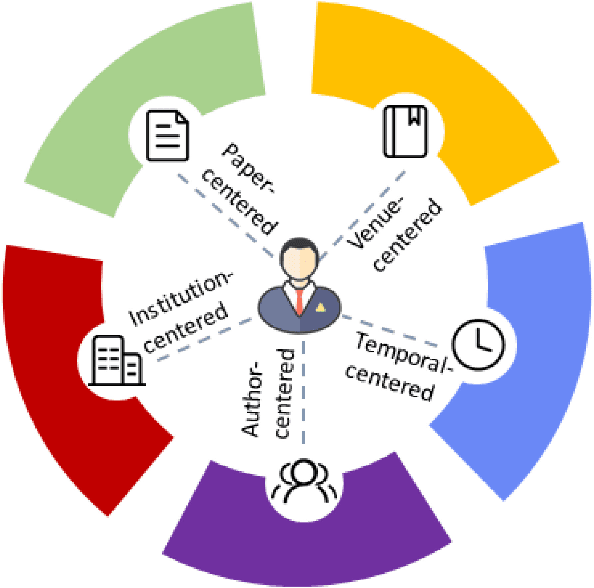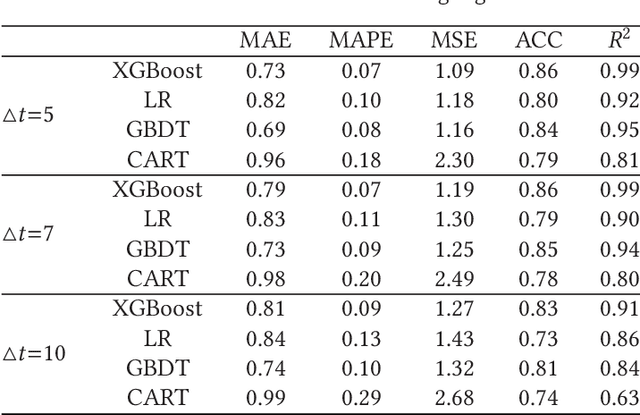Xiangjie Kong
EMNLP: Educator-role Moral and Normative Large Language Models Profiling
Aug 21, 2025Abstract:Simulating Professions (SP) enables Large Language Models (LLMs) to emulate professional roles. However, comprehensive psychological and ethical evaluation in these contexts remains lacking. This paper introduces EMNLP, an Educator-role Moral and Normative LLMs Profiling framework for personality profiling, moral development stage measurement, and ethical risk under soft prompt injection. EMNLP extends existing scales and constructs 88 teacher-specific moral dilemmas, enabling profession-oriented comparison with human teachers. A targeted soft prompt injection set evaluates compliance and vulnerability in teacher SP. Experiments on 12 LLMs show teacher-role LLMs exhibit more idealized and polarized personalities than human teachers, excel in abstract moral reasoning, but struggle with emotionally complex situations. Models with stronger reasoning are more vulnerable to harmful prompt injection, revealing a paradox between capability and safety. The model temperature and other hyperparameters have limited influence except in some risk behaviors. This paper presents the first benchmark to assess ethical and psychological alignment of teacher-role LLMs for educational AI. Resources are available at https://e-m-n-l-p.github.io/.
A Dataset for Spatiotemporal-Sensitive POI Question Answering
May 16, 2025Abstract:Spatiotemporal relationships are critical in data science, as many prediction and reasoning tasks require analysis across both spatial and temporal dimensions--for instance, navigating an unfamiliar city involves planning itineraries that sequence locations and timing cultural experiences. However, existing Question-Answering (QA) datasets lack sufficient spatiotemporal-sensitive questions, making them inadequate benchmarks for evaluating models' spatiotemporal reasoning capabilities. To address this gap, we introduce POI-QA, a novel spatiotemporal-sensitive QA dataset centered on Point of Interest (POI), constructed through three key steps: mining and aligning open-source vehicle trajectory data from GAIA with high-precision geographic POI data, rigorous manual validation of noisy spatiotemporal facts, and generating bilingual (Chinese/English) QA pairs that reflect human-understandable spatiotemporal reasoning tasks. Our dataset challenges models to parse complex spatiotemporal dependencies, and evaluations of state-of-the-art multilingual LLMs (e.g., Qwen2.5-7B, Llama3.1-8B) reveal stark limitations: even the top-performing model (Qwen2.5-7B fine-tuned with RAG+LoRA) achieves a top 10 Hit Ratio (HR@10) of only 0.41 on the easiest task, far below human performance at 0.56. This underscores persistent weaknesses in LLMs' ability to perform consistent spatiotemporal reasoning, while highlighting POI-QA as a robust benchmark to advance algorithms sensitive to spatiotemporal dynamics. The dataset is publicly available at https://www.kaggle.com/ds/7394666.
Deep Learning for Time Series Forecasting: A Survey
Mar 13, 2025Abstract:Time series forecasting (TSF) has long been a crucial task in both industry and daily life. Most classical statistical models may have certain limitations when applied to practical scenarios in fields such as energy, healthcare, traffic, meteorology, and economics, especially when high accuracy is required. With the continuous development of deep learning, numerous new models have emerged in the field of time series forecasting in recent years. However, existing surveys have not provided a unified summary of the wide range of model architectures in this field, nor have they given detailed summaries of works in feature extraction and datasets. To address this gap, in this review, we comprehensively study the previous works and summarize the general paradigms of Deep Time Series Forecasting (DTSF) in terms of model architectures. Besides, we take an innovative approach by focusing on the composition of time series and systematically explain important feature extraction methods. Additionally, we provide an overall compilation of datasets from various domains in existing works. Finally, we systematically emphasize the significant challenges faced and future research directions in this field.
GPT-Augmented Reinforcement Learning with Intelligent Control for Vehicle Dispatching
Aug 19, 2024



Abstract:As urban residents demand higher travel quality, vehicle dispatch has become a critical component of online ride-hailing services. However, current vehicle dispatch systems struggle to navigate the complexities of urban traffic dynamics, including unpredictable traffic conditions, diverse driver behaviors, and fluctuating supply and demand patterns. These challenges have resulted in travel difficulties for passengers in certain areas, while many drivers in other areas are unable to secure orders, leading to a decline in the overall quality of urban transportation services. To address these issues, this paper introduces GARLIC: a framework of GPT-Augmented Reinforcement Learning with Intelligent Control for vehicle dispatching. GARLIC utilizes multiview graphs to capture hierarchical traffic states, and learns a dynamic reward function that accounts for individual driving behaviors. The framework further integrates a GPT model trained with a custom loss function to enable high-precision predictions and optimize dispatching policies in real-world scenarios. Experiments conducted on two real-world datasets demonstrate that GARLIC effectively aligns with driver behaviors while reducing the empty load rate of vehicles.
Pattern-Matching Dynamic Memory Network for Dual-Mode Traffic Prediction
Aug 12, 2024



Abstract:In recent years, deep learning has increasingly gained attention in the field of traffic prediction. Existing traffic prediction models often rely on GCNs or attention mechanisms with O(N^2) complexity to dynamically extract traffic node features, which lack efficiency and are not lightweight. Additionally, these models typically only utilize historical data for prediction, without considering the impact of the target information on the prediction. To address these issues, we propose a Pattern-Matching Dynamic Memory Network (PM-DMNet). PM-DMNet employs a novel dynamic memory network to capture traffic pattern features with only O(N) complexity, significantly reducing computational overhead while achieving excellent performance. The PM-DMNet also introduces two prediction methods: Recursive Multi-step Prediction (RMP) and Parallel Multi-step Prediction (PMP), which leverage the time features of the prediction targets to assist in the forecasting process. Furthermore, a transfer attention mechanism is integrated into PMP, transforming historical data features to better align with the predicted target states, thereby capturing trend changes more accurately and reducing errors. Extensive experiments demonstrate the superiority of the proposed model over existing benchmarks. The source codes are available at: https://github.com/wengwenchao123/PM-DMNet.
CADRL: Category-aware Dual-agent Reinforcement Learning for Explainable Recommendations over Knowledge Graphs
Aug 06, 2024



Abstract:Knowledge graphs (KGs) have been widely adopted to mitigate data sparsity and address cold-start issues in recommender systems. While existing KGs-based recommendation methods can predict user preferences and demands, they fall short in generating explicit recommendation paths and lack explainability. As a step beyond the above methods, recent advancements utilize reinforcement learning (RL) to find suitable items for a given user via explainable recommendation paths. However, the performance of these solutions is still limited by the following two points. (1) Lack of ability to capture contextual dependencies from neighboring information. (2) The excessive reliance on short recommendation paths due to efficiency concerns. To surmount these challenges, we propose a category-aware dual-agent reinforcement learning (CADRL) model for explainable recommendations over KGs. Specifically, our model comprises two components: (1) a category-aware gated graph neural network that jointly captures context-aware item representations from neighboring entities and categories, and (2) a dual-agent RL framework where two agents efficiently traverse long paths to search for suitable items. Finally, experimental results show that CADRL outperforms state-of-the-art models in terms of both effectiveness and efficiency on large-scale datasets.
Exploring Human Mobility for Multi-Pattern Passenger Prediction: A Graph Learning Framework
Feb 17, 2022



Abstract:Traffic flow prediction is an integral part of an intelligent transportation system and thus fundamental for various traffic-related applications. Buses are an indispensable way of moving for urban residents with fixed routes and schedules, which leads to latent travel regularity. However, human mobility patterns, specifically the complex relationships between bus passengers, are deeply hidden in this fixed mobility mode. Although many models exist to predict traffic flow, human mobility patterns have not been well explored in this regard. To reduce this research gap and learn human mobility knowledge from this fixed travel behaviors, we propose a multi-pattern passenger flow prediction framework, MPGCN, based on Graph Convolutional Network (GCN). Firstly, we construct a novel sharing-stop network to model relationships between passengers based on bus record data. Then, we employ GCN to extract features from the graph by learning useful topology information and introduce a deep clustering method to recognize mobility patterns hidden in bus passengers. Furthermore, to fully utilize Spatio-temporal information, we propose GCN2Flow to predict passenger flow based on various mobility patterns. To the best of our knowledge, this paper is the first work to adopt a multipattern approach to predict the bus passenger flow from graph learning. We design a case study for optimizing routes. Extensive experiments upon a real-world bus dataset demonstrate that MPGCN has potential efficacy in passenger flow prediction and route optimization.
The Gene of Scientific Success
Feb 17, 2022



Abstract:This paper elaborates how to identify and evaluate causal factors to improve scientific impact. Currently, analyzing scientific impact can be beneficial to various academic activities including funding application, mentor recommendation, and discovering potential cooperators etc. It is universally acknowledged that high-impact scholars often have more opportunities to receive awards as an encouragement for their hard working. Therefore, scholars spend great efforts in making scientific achievements and improving scientific impact during their academic life. However, what are the determinate factors that control scholars' academic success? The answer to this question can help scholars conduct their research more efficiently. Under this consideration, our paper presents and analyzes the causal factors that are crucial for scholars' academic success. We first propose five major factors including article-centered factors, author-centered factors, venue-centered factors, institution-centered factors, and temporal factors. Then, we apply recent advanced machine learning algorithms and jackknife method to assess the importance of each causal factor. Our empirical results show that author-centered and article-centered factors have the highest relevancy to scholars' future success in the computer science area. Additionally, we discover an interesting phenomenon that the h-index of scholars within the same institution or university are actually very close to each other.
CenGCN: Centralized Convolutional Networks with Vertex Imbalance for Scale-Free Graphs
Feb 16, 2022



Abstract:Graph Convolutional Networks (GCNs) have achieved impressive performance in a wide variety of areas, attracting considerable attention. The core step of GCNs is the information-passing framework that considers all information from neighbors to the central vertex to be equally important. Such equal importance, however, is inadequate for scale-free networks, where hub vertices propagate more dominant information due to vertex imbalance. In this paper, we propose a novel centrality-based framework named CenGCN to address the inequality of information. This framework first quantifies the similarity between hub vertices and their neighbors by label propagation with hub vertices. Based on this similarity and centrality indices, the framework transforms the graph by increasing or decreasing the weights of edges connecting hub vertices and adding self-connections to vertices. In each non-output layer of the GCN, this framework uses a hub attention mechanism to assign new weights to connected non-hub vertices based on their common information with hub vertices. We present two variants CenGCN\_D and CenGCN\_E, based on degree centrality and eigenvector centrality, respectively. We also conduct comprehensive experiments, including vertex classification, link prediction, vertex clustering, and network visualization. The results demonstrate that the two variants significantly outperform state-of-the-art baselines.
* 16 pages, 8 figures
Understanding the Advisor-advisee Relationship via Scholarly Data Analysis
Aug 20, 2020



Abstract:Advisor-advisee relationship is important in academic networks due to its universality and necessity. Despite the increasing desire to analyze the career of newcomers, however, the outcomes of different collaboration patterns between advisors and advisees remain unknown. The purpose of this paper is to find out the correlation between advisors' academic characteristics and advisees' academic performance in Computer Science. Employing both quantitative and qualitative analysis, we find that with the increase of advisors' academic age, advisees' performance experiences an initial growth, follows a sustaining stage, and finally ends up with a declining trend. We also discover the phenomenon that accomplished advisors can bring up skilled advisees. We explore the conclusion from two aspects: (1) Advisees mentored by advisors with high academic level have better academic performance than the rest; (2) Advisors with high academic level can raise their advisees' h-index ranking. This work provides new insights on promoting our understanding of the relationship between advisors' academic characteristics and advisees' performance, as well as on advisor choosing.
 Add to Chrome
Add to Chrome Add to Firefox
Add to Firefox Add to Edge
Add to Edge